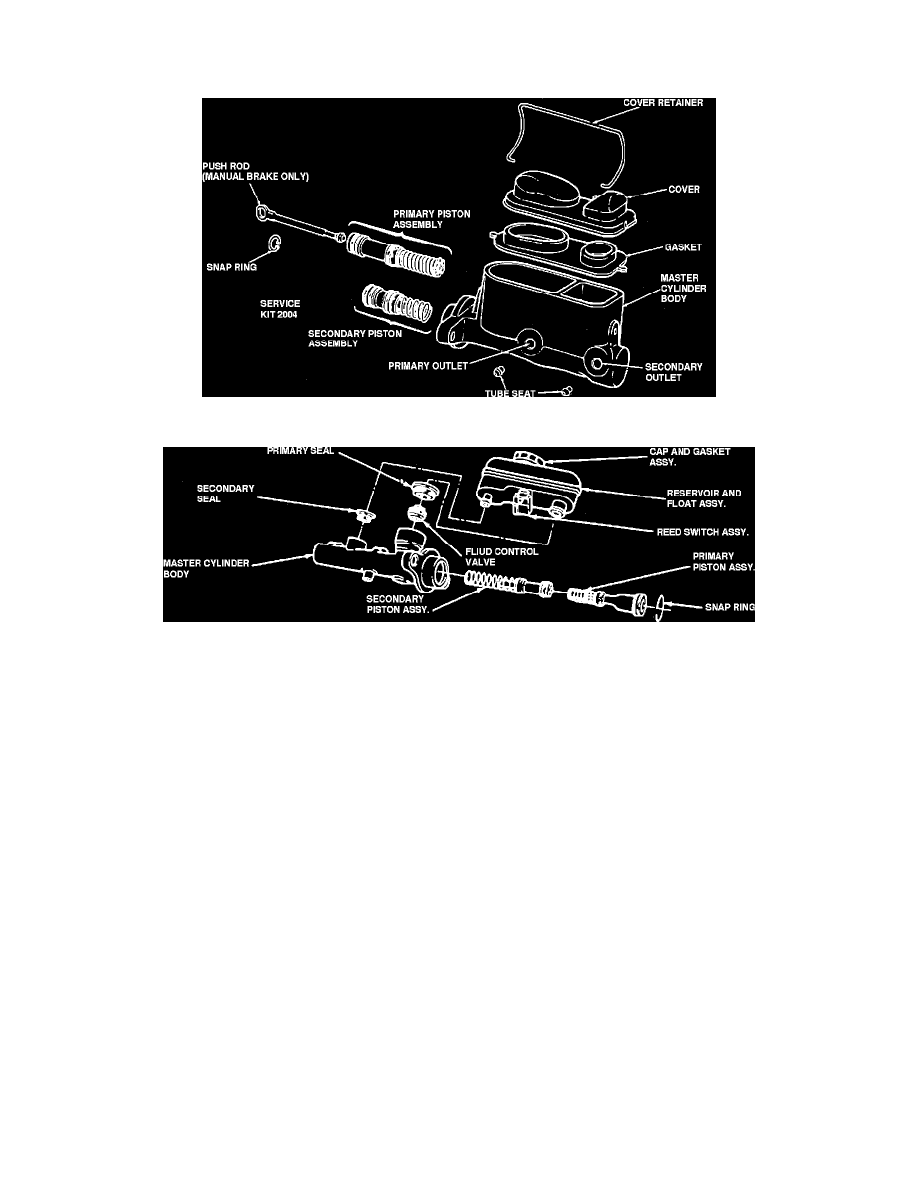Escort L4-116 1.9L SOHC HO (1989)

Brake Master Cylinder: Service and Repair
Disassembly and Assembly
Fig. 21 Exploded View Of Bendix Dual Master Cylinder Used w/Disc Brakes
Fig. 22 Master Cylinder w/Fluid Control Valve Installed. Front Wheel Drive Models
Disassemble
1.
Remove cover and diaphragm then drain brake fluid from master cylinder, Fig. 21.
2.
On front wheel drive models, using a screwdriver, pry up on reservoir and remove primary port from master cylinder, Fig. 22.
3.
Rotate reservoir out of way and remove sealing grommet from master cylinder casting.
4.
Using a socket, remove fluid control valve.
5.
On all models, depress primary piston and remove snap ring from retaining groove at open end of bore.
6.
Remove primary and secondary piston assemblies from master cylinder. If secondary piston does not readily come out, apply air pressure to
secondary outlet port to remove.
Inspection
When disassembled, wash all parts in clean brake fluid only. Use an air hose to blow out all passages, orifices and valve holes. Air dry and place parts on
clean paper or lint-free cloth. Inspect master cylinder bore for scoring, rust, pitting or etching. Any of these conditions will require replacement of the
housing. Inspect master cylinder pistons for scoring, pitting or distortion. Replace piston if any of these conditions exist.
If either master cylinder housing or piston is replaced, clean new parts with clean brake fluid and blow out all passages with air hose.
Examine reservoirs for foreign matter and check all passages for restrictions. If there is any suspicion of contamination or evidence of corrosion,
completely flush hydraulic system as outlined below.
When overhauling a master cylinder, use all parts contained in repair kit. Before starting reassembly, dip all cups, seals, pistons, springs, check valves
and retainers in clean brake fluid and place in a clean pan or on clean paper. Wash hands with soap and water only to prevent contamination of rubber
parts from oil, kerosene or gasoline. During assembly, dip all parts in clean brake fluid.
Inspect through side outlet of dual master cylinder housing to make certain cup lips do not hang up on edge of hole or turn back, which would result in
faulty operation. A piece of 3/16 inch rod with an end rounded off will be helpful in guiding cups past hole.
When overhauling aluminum master cylinders, carefully inspect master cylinder bore for corrosion. If corroded, replace master cylinder. Do not hone or
use abrasives on the bore of these cylinders.
Assembly
